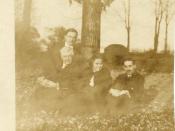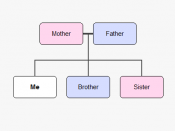Autism impinges on an individual's capacity to form social relationships and hinders their communication. One chief aspect of children with autism is delayed speech and language (Metz & Haas, 2003). This paper discusses a modification model of treating autism which eases the communication barriers between people with autism and others. This then may allow children with autism to build the kind of relationships while they are young that they will be able to build on later in life.
The Natural Language Paradigm (NLP) was developed in order to assist in opening the communication barriers that clients and their families experience. It emphasizes integrating motivational factors into the teaching situation. The NLP emphasizes augmenting unprompted social communication by means of a mixture of activities. Multi-modal communication mechanisms such as gesture, speech and augmentative communication are used in obtaining language in chief contexts. In other words, these methods are used in order to help maximize the speech output.
The NLP uses a child's interests as well as emphasizing shared control and functional communication to increase generative language output. (Laski, Charlop, and Schreibman, 1988).
The NLP involves four factors. The first is using a purposeful stimulus which is selected by the child. The second factor is the use of natural reinforcers. The third is the reinforcement of communicative attempts even if they are incorrect, and the fourth intervention trials mixed with a natural exchange.
In the study, seven boys and one girl, diagnosed with autism, participated. They were broken up into two groups: non-verbal and echolalic. The non-verbal children ranged in age from approximately 5 years old to 10 years old. Their mental age ranged from, approximately 1.5 years old to 3.5 years old. The second group was the echolalic group. They ranged in ages from approximately 6 years old to...


